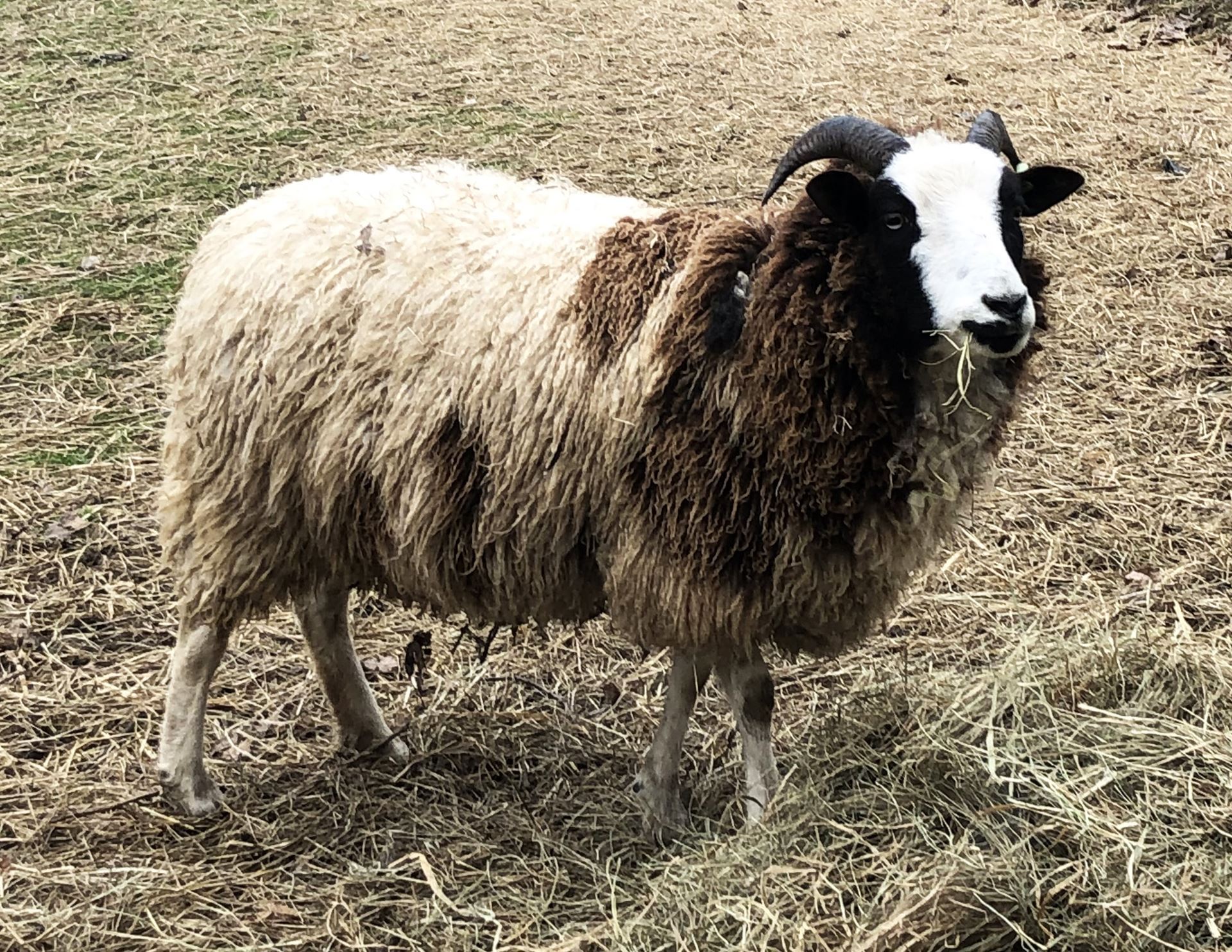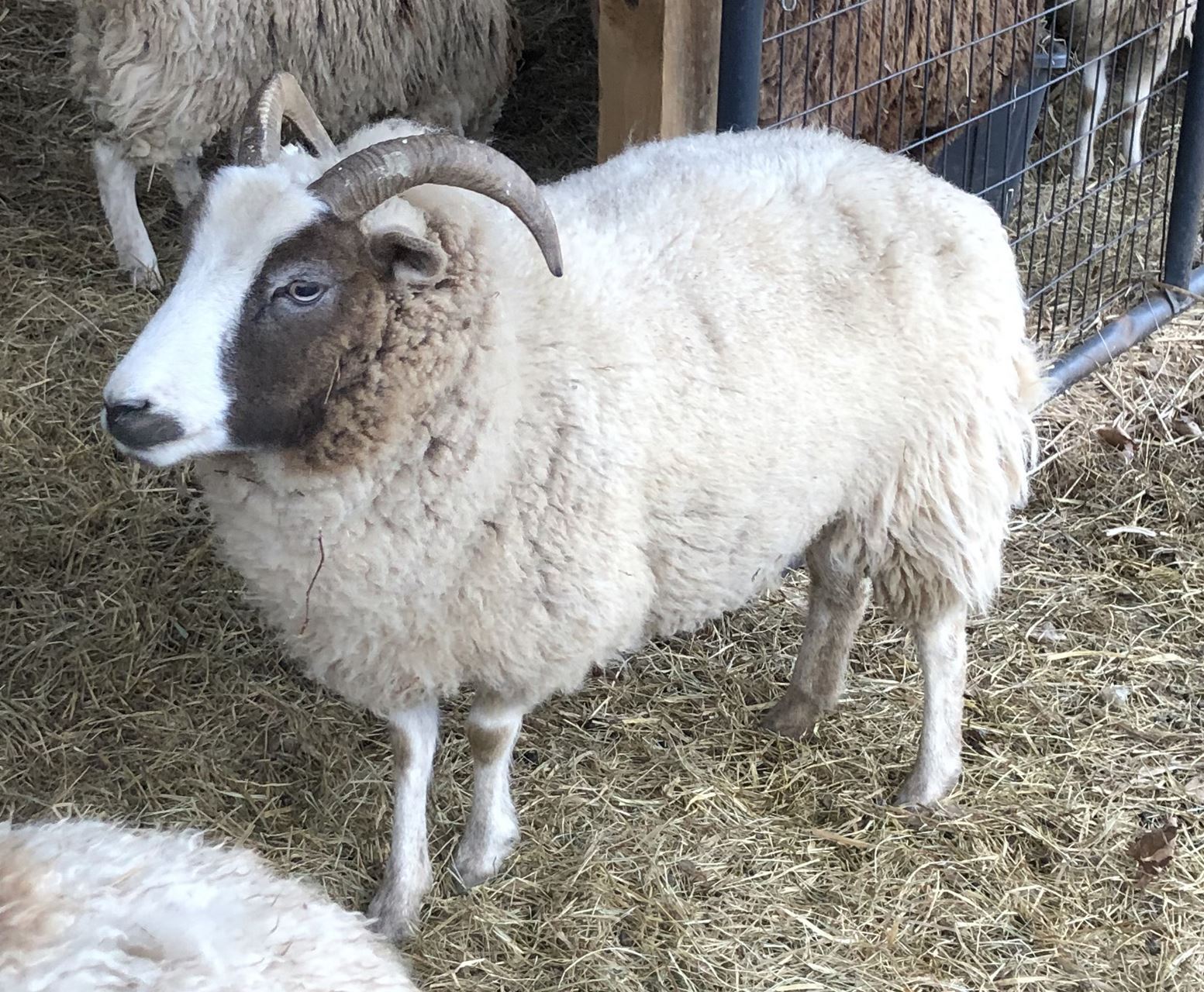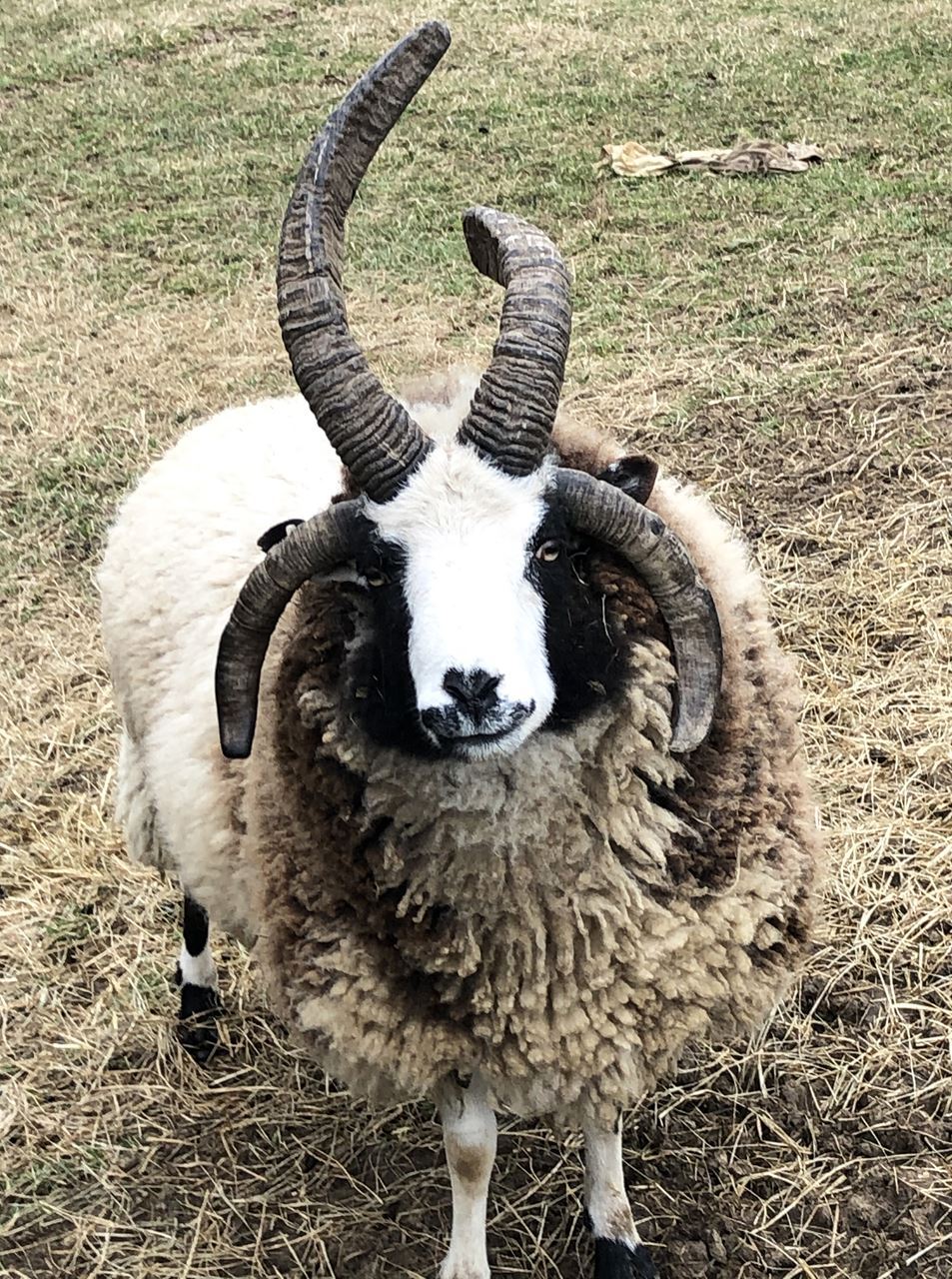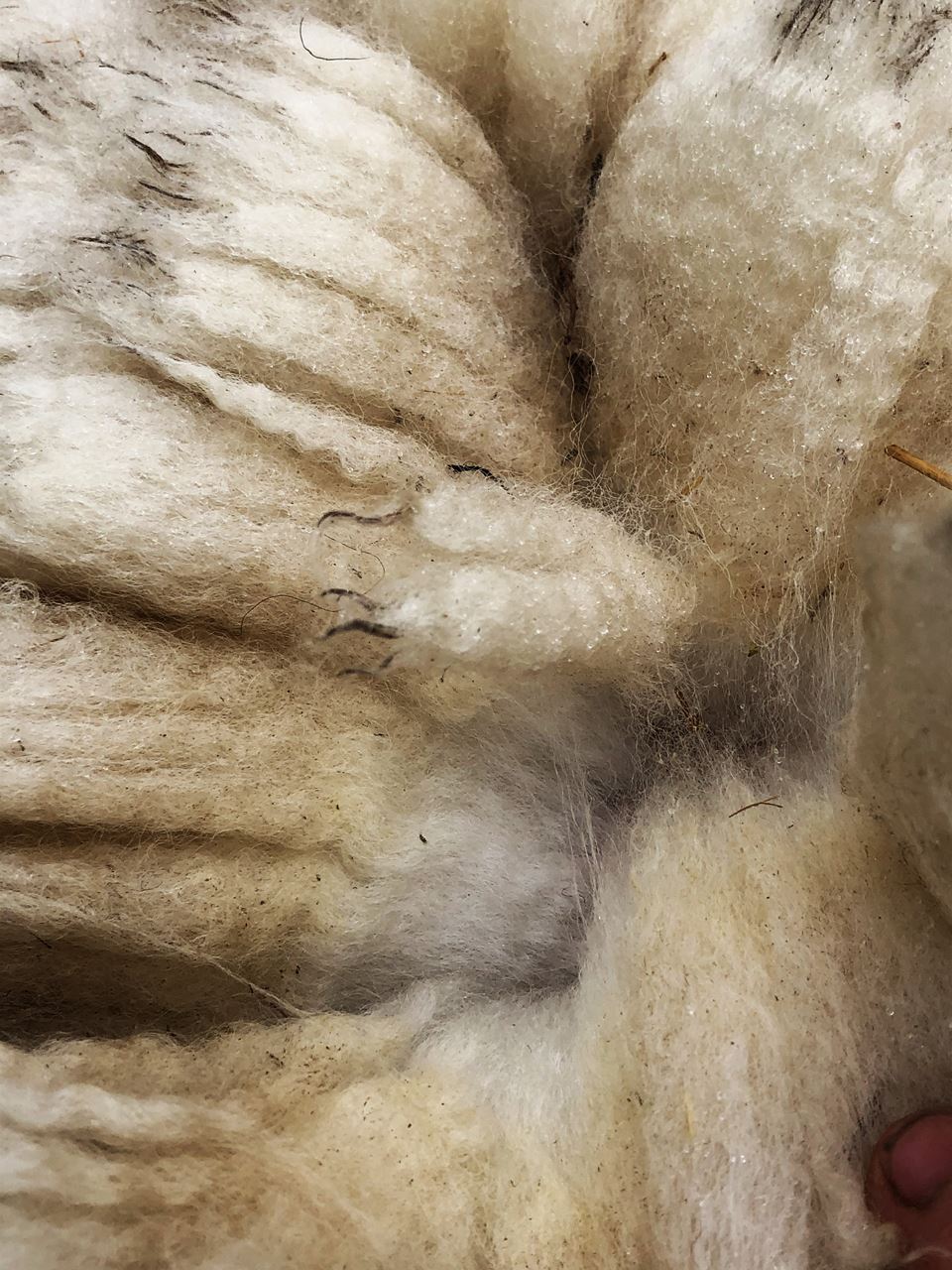The Local Cloth Spinning Study Group began last September 2020 and each month we get together to spin four local fiber samples (currently on zoom, but.....soon together!).
Previous blogs have highlighted local fiber farmers, many of whom sell their fibers.
- You can go directly to their website or facebook page by checking out the Local Cloth blog "Highlighting Fiber Farmer LC Members" from 04 Jan 2021.
- Check out shoplocalcloth.org for locally produced fibers, yarn, and more (~100 mile radius from Asheville). (EDIT: 9/30/2022, the online shop is no longer available)
Our running summary of the activity of the Spinning Study Group can be found at "Spinning Study Group Samples: Sept 2020 - to present"![]()
Jacob sheep
at HobbyKnob Farm (Elizabeth Bell Strub)
Conservation Breed (American Jacob), rare
Ewe and Ram weights: 80-120, 120-180
Fleece Weights: 3-6 pounds
Staple length: 3-7" (HobbyKnob sample: 3.75", 4.3")
Fiber diameters: 25-35 microns (HobbyKnob sample: 27 micron)
Colors: white or lilac with black, brown-black, gray, brown, spots.
Horns: 2, 4, or occasionally 6
Use: wool
Live Stock Conservancy information on Jacob sheep.
See also The Field Guide to Fleece by Deborah Robson & Carol Ekarius, Storey Pubishing, 2013.
_____
This photo is taken from the
HobbyKnob Facebook page where Elizabeth says "...
these little twins are now 2 weeks old ... for those of you that don’t know, the spotting pattern is unique to each sheep, just like your thumbprint"

_____
Just like all of us, the mature critter looks rather different, and can be very diverse in appearance; see photos and this note from Elizabeth.
"They can have 2, 4 or more horns. Their spotting pattern is like our fingerprint, specific to every sheep. There is a wide range of acceptable traits for registration but they all must fall within a range of 15-85% color. Also a range of fleece character. Rams specifically cannot be finer than 23.5 micron. And yes, we test if we (the inspectors) believe a ram is too fine and he will fail if he is below 23.5. You will notice in one of the photos a lighter looking ewe, she has a color we refer to as “Lilac” a dark color with a lavender like hue instead of black/brown. You can tell she is a bit lighter than the others. " Elizabeth Bell Strub

_____
This light colored Jacob is almost lavender in appearance (probably not adequately seen in the photograph).

_____


_____
This is a Jacob ram. The rams can, amazingly, have different numbers of horns. This guy has four horns (how must his neck feel at the end of a long day?). As a scientist, I would find it fascinating to study the development of these horns from embryonic bud to fully developed adult horn and then try to understand the nutrition costs to the animal relative to coat production, for example.

_____
This is his fleece seen from the top and parted to show down to the skin.

